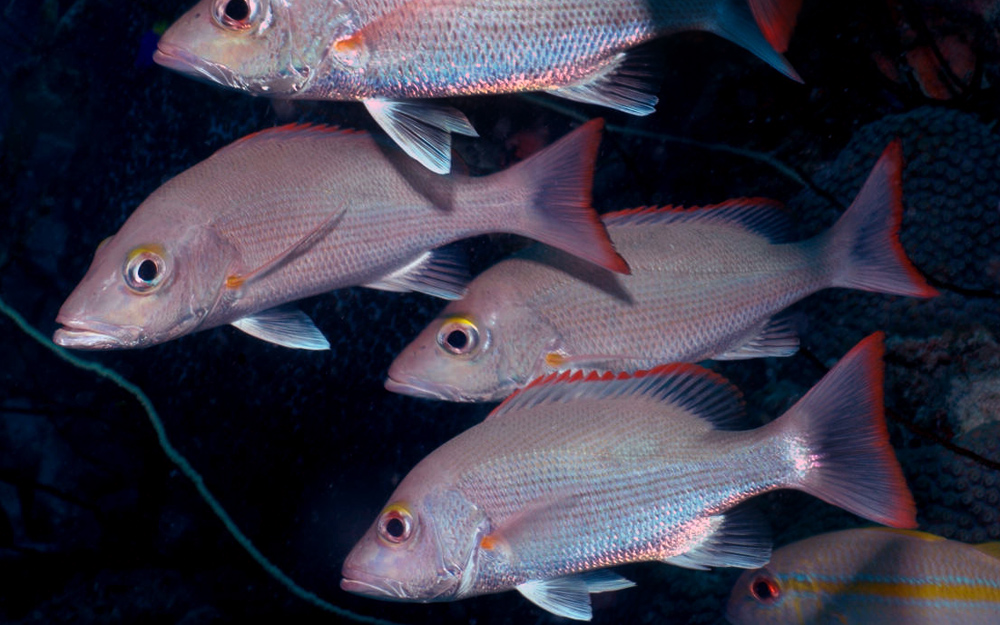Mahogany snapper
(Lutjanus mahagoni)

Classification
General data
This colorful reef fish grows to an average 15 inches long but has been caught larger. It is a dark gray to olive on top, with silvery sides and a distinct black spot on its upper back. There is a reddish tint to much of its body, and its fins have rusty red highlights. Although it is a popular food fish, it has been linked to ciguatera poisoning because it is higher on the reef food chain.
Common Names
English language common names include mahogany snapper, mahogony snapper, lantern jaw, and spot snapper. Other common names include colulie and kalala (Papiamento); lucjan kaszmirski (Polish), ojanco, pargo, pargo ojon, rayado de yerba, and sama ojua (Spanish); sarde and vivaneau (French); schnapper (German).
Geographical Distribution
The mahogany snapper is found in the western Atlantic Ocean, from the Carolinas to Venezuela, including the Gulf of Mexico. It is very common in the Caribbean and around Bermuda.
Habitat
This snapper lives nearshore or offshore in clear, shallow warm water over rocky bottoms and coral reefs and less commonly over sandy areas and seagrass beds. Their depth ranges to depths of 325 feet (100 meters). As a warm water species, it is found in temperate waters only during the heat of the summer. Mahogany snappers drift alone or in small groups over coral reefs, often among gorgonians and hard corals, or in crevices and caves.
Biology
This snapper has a relatively deep body. The belly runs straight from the mouth to the anal fin. It has a pointed snout and large eyes. The lower jaw projects beyond upper jaw. The anal fin is rounded, more than usual in snappers. It has a bi-lobed dorsal fin and long pectoral fin, as found in other many lutjanid fish. The anal fin is rounded. The caudal fin is moderately forked.
Coloration
Mahogany snappers are very colorful fish. Their back and upper sides are gray to dark olive, becoming silvery on the lower sides and belly. There may be a red tinge throughout the entire body. There is a conspicuous black spot on the upper back, below the anterior soft dorsal fin rays. The fins are red to yellow and the caudal fin has a dusky margin.
Size, Age, and Growth
The mahogany snapper has an average length of 15 inches (38 cm), with a maximum length of 19 inches (48 cm).
Food Habits
The mahogany snapper feeds nocturnally on small bottom fishes such as grunts. It also feeds on marine invertebrates including shrimp, cephalopods, and crabs.
Reproduction
Spawning occurs during the months of May, June, and July throughout the mahogany snapper’s range. They most commonly spawn in the northeastern Caribbean Sea. Pelagic eggs are released and are dispersed by the ocean currents. After fertilization occurs, the eggs hatch within a day. Although little is known about the larvae, they are planktonic at lengths less than 10 mm. They eventually settle out of the plankton, onto suitable habitat that offers some protection from predators. Juveniles have been described as pale with pink to red pigmentation on the distal portions of the median fins, and a prominent spot on the upper back.
Rebecca Murray and Cathleen Bester
https://www.floridamuseum.ufl.edu/discover-fish/species-profiles/lutjanus-mahogoni/











